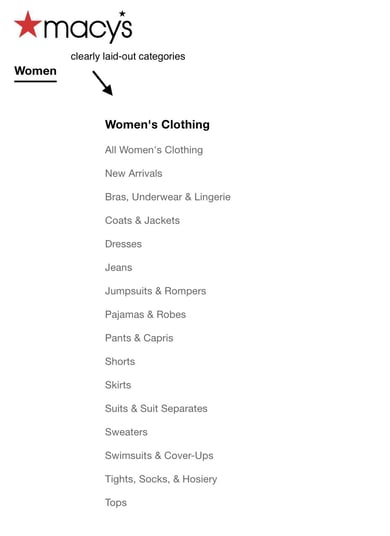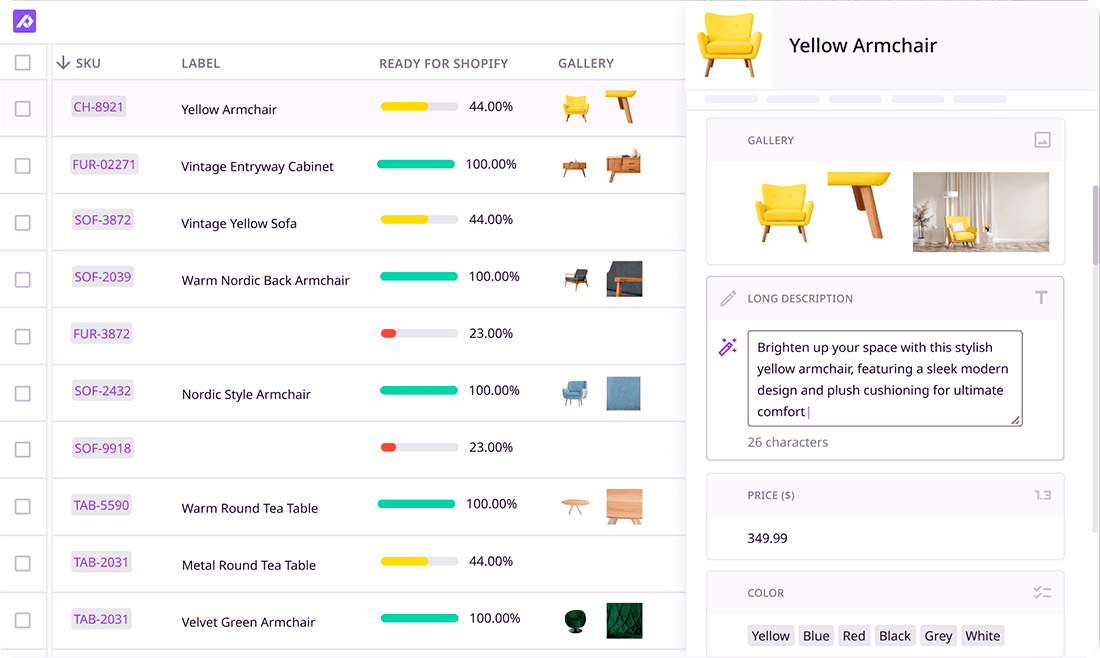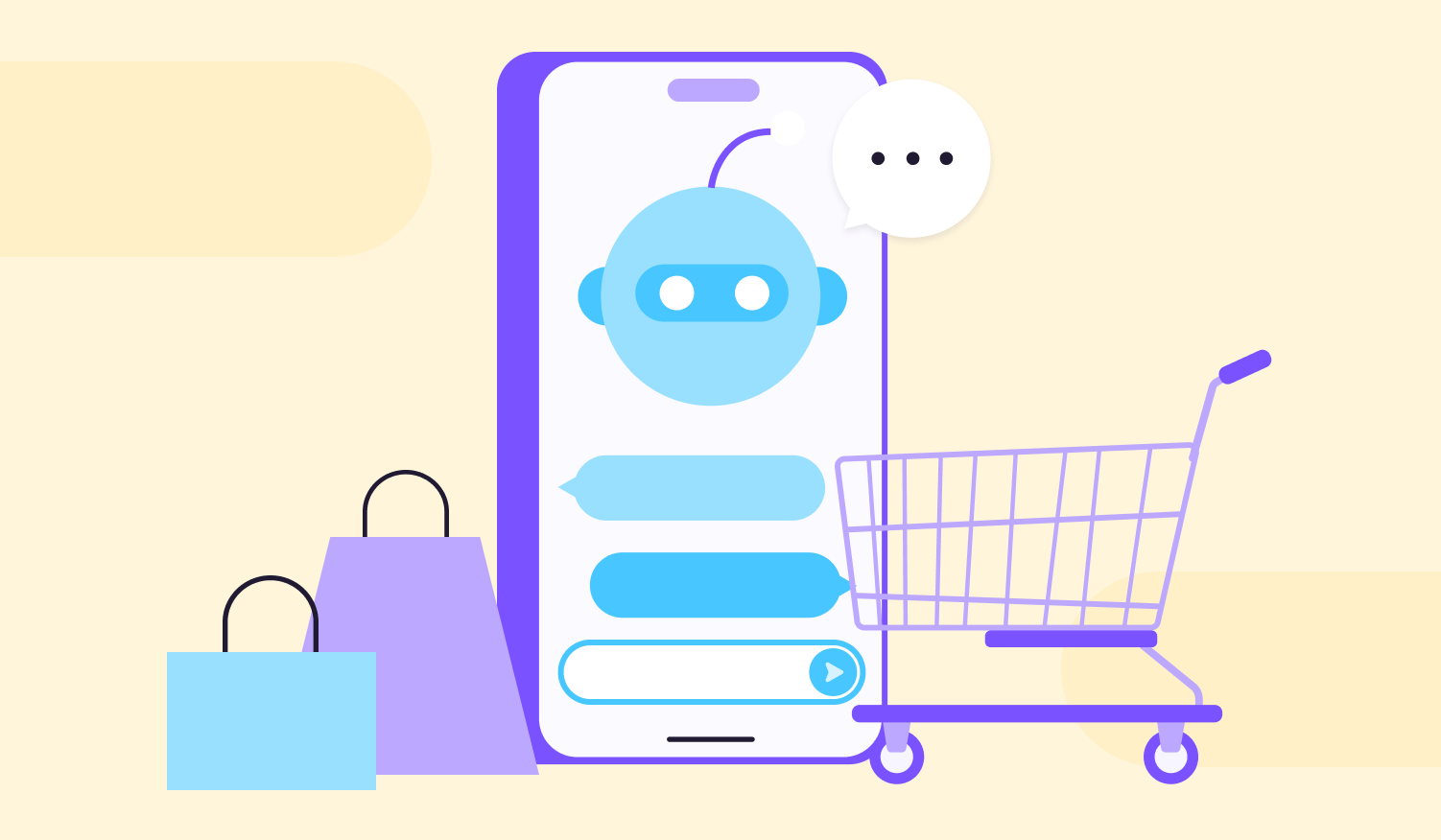
Keep the good stuff coming
Subscribe to our blog newsletter and get monthly content that helps you manage product data smarter.
No spam. Just real value.
In 2022, customers are the ones who run the show. The minute they land on an ecommerce website, they have expectations of how it should look and the user experience it should offer.
They are in control—either you give them what they want, or they’ll ignore you. The latter will cost you in sales, customer loyalty, and ultimately, revenue. 'Cause, they’re not coming back.
So, to maximize your chances of success, you need to meet expectations and deliver an outstanding user experience. Luckily, there are lots of ecommerce features that can facilitate all of that. In this article, we’ll talk you through the top features you need to implement.
1. Organized product categories with breadcrumbs
Product categorization or product taxonomy helps customers intuitively navigate a website as they search for products they’re looking to buy. When your website is poorly organized, it can ruin a customer's shopping experience. Studies have found that 38% of shoppers will stop engaging with a website that is unorganized. So, when your web shop is structured with clearly laid out categories, attributes, and numerical values, it will enhance their experience.

For even better navigation, you should implement breadcrumbs. This is an approach used to guide customers through your website and navigate back to previous pages. For example, they can see their exact location on your website, how they arrived there and how they can navigate back should they need to. It’s a crucial feature that improves product findability, which makes it easier for customers to go back and forth between pages as they try to make buying decisions.
It is advised that you design the breadcrumbs in a way that makes sense for your site and the customers who will be using it. Experts suggest that a left-to-right design is the best option as customers spend 80% reading the left side of the page and 20% on the right side.
Here’s an example of breadcrumbs on an online shopping website:

2. User-friendly product search
On-site search helps customers find products using keywords or phrases that are matched with products that show up in the search results. SearchNode research found that site search generates 30 to 60% of all ecommerce revenue. This makes it that much more important to ensure you implement a site search functionality that is user-friendly. It’s not enough to optimize for the best keywords and phrases you know customers use. You also have to consider that customers will make mistakes in their searches, such as misspellings or typos.
For example, if a customer searches for a “skiping rope” instead of “skipping rope,” and there are no results returning with the relevant products, it can be a frustrating experience.
Develop a search functionality that uses natural language processing (NLP) to understand the intended meaning behind their search. That way, your web shop can return results with relevant products even if customers make errors in their search queries. In addition, the results can return relationships to showcase complementary products that match your search.
Here’s an example of relationships on Amazon:

3. Attribute filtering and sorting
Some customers know exactly what they want. They hope to enter your web shop, purchase a white v-neck t-shirt in an XL, and checkout without any hiccups. Through product filtering and sorting, you can make this dream of seamless shopping a reality for your customers.
By implementing filtering capabilities, customers expect your website to be frictionless. Several studies show that offering color, price, size, product material or product type, and rating filtering options can ensure customer satisfaction. And the same can be said for sorting pricing: low-to-high or high-to-low, new arrivals, best sellers, most popular, and reviews.
4. Customer reviews
Customers look to establish trust with the brand and the product before they make the commitment to purchase. Customer reviews, aka user-generated content, help them build that trust. They allow customers to get a second opinion from other existing customers who bought the same product from the same brand. While they help customers make a buying decision, they’re great for your website’s search engine optimization (SEO) and ranking.
According to Magento:
“Product reviews help to build a sense of community and are considered more credible than any advertising money can buy. In fact, some search engines give sites with product reviews a higher ranking than those without. For those who find your site by searching for a specific product, a product review is essentially the landing page of your store. Product reviews help people find your store, keep them engaged, and often lead to sales.”
That summarizes why this feature should be part of your website update strategy.
In conclusion
These features above can play a huge role in helping you win. But of course, your web shop needs to have high-quality product content to complement these features. That’s where product information management software adds value to your ecommerce tech stack.
It can help you store and manage product information in a single location.
Plytix is a PIM database that allows you to create a URL feed that you can push to your Magento store using plugins. If you’re a multichannel commerce brand, you can even use the same information for multiple touchpoints, tweak it where necessary, and push it to other channels.
Our PIM for ecommerce was created with businesses like you in mind, to help you navigate your ecommerce journey with ease! If you want to learn more about Plytix, book a demo.
 If you’re wondering how to shop for a PIM, download this FREE PIM buyer’s guide.
If you’re wondering how to shop for a PIM, download this FREE PIM buyer’s guide.

What if your product data actually worked for you?
We’ll show you how Plytix helps you stop fixing data—and start using it.
Related posts
Keep the good stuff coming
Subscribe to our blog newsletter and get monthly content that helps you manage product data smarter.
No spam. Just real value.





Think others should see this?
Go ahead and share it.